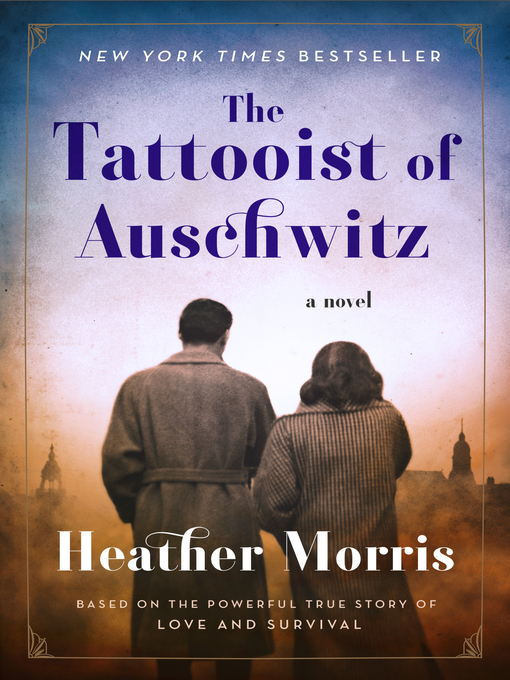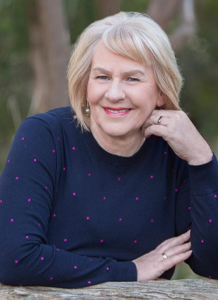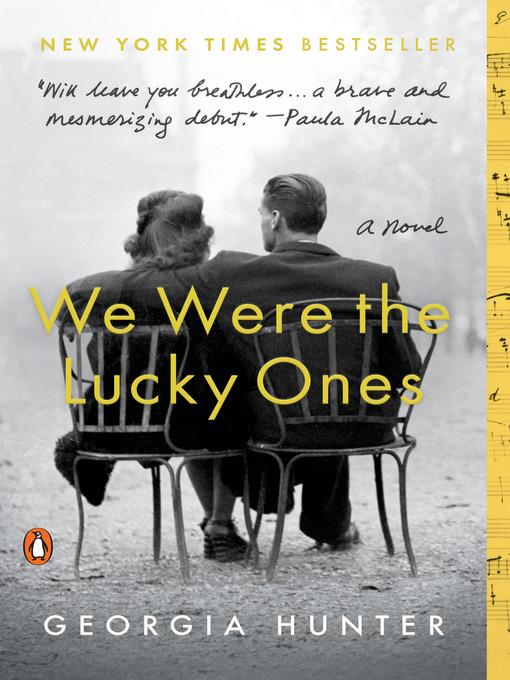 The Tattooist of Auschwitz
The Tattooist of Auschwitz
by Heather Morris
GENRE: Historical Fiction, WWII
Based on the true story of Lale Sokolov, a Slovakian Jew imprisoned at Auschwitz in 1942 where he is forced to tattoo numbers on his fellow prisoners. There Lale witnesses brutality and bravery and meets Gita, the love of his life.
 Author Biography
Author Biography
Heather Morris is a native of New Zealand, now resident in Australia. For several years, while working in a large public hospital in Melbourne, she studied and wrote screenplays, one of which was optioned by an Academy Award-winning screenwriter in the US. In 2003, Heather was introduced to an elderly gentleman who 'might just have a story worth telling'. The day she met Lale Sokolov changed both their lives. Their friendship grew and Lale embarked on a journey of self-scrutiny, entrusting the innermost details of his life during the Holocaust to her. Heather originally wrote Lale's story as a screenplay - which ranked high in international competitions - before reshaping it into her debut novel, The Tattooist of Auschwitz. - Amazon.com
Booklist
Australian author Morris' first novel is based heavily on the memories of Lale Sokolov, a Slovakian Jew who spent almost three years in the Auschwitz-Birkenau concentration camp. For most of that time, he tattooed numbers onto the arms of fellow prisoners, one of whom he would later marry. Like Lale, Gita was Slovakian, and with some maneuvering by him, she was assigned to a relatively safe job, working as a secretary in the administrative building. Morris tells their story in rapidly moving present tense, in which the horrors of the camps contrast with the growing love between them. Lale comes across as a sharp-witted businessman with a touch of the con artist, smuggling out jewels and currency in sausages and chocolate. Although one might suspect that there's far more to his past than is revealed here, much of Lale's story's complexity makes it onto the page. And even though it's clear that Lale will survive, Morris imbues the novel with remarkable suspense. -- Margaret Quamme (Reviewed 8/1/2018) (Booklist, vol 114, number 22, p41).
Publisher's Weekly
Based on a true story, Morris’s debut fictionalizes the romance between two concentration camp prisoners during WWII. In 1942, Lale, a Slovakian Jew, is given the position of tattooist, tasked with numbering the arm of every new inmate who enters Auschwitz-Birkenau. He uses his position to procure black market items, which he trades away in return for favors. One day, he tattoos the arm of a young woman named Gita and promptly falls in love with her. They begin meeting on Sundays, the only day of rest in the camps. He vows to Gita that he will marry her when they are freed, a boast that Gita is dubious of but nevertheless clings to. Lale even becomes something of a guardian angel to Gita, providing her with penicillin when she contracts typhus. Separated at the end of the war by the fleeing SS, Lale and Gita set out to find one another again in postwar Europe. Too many, this book will be most appreciated for its powerful evocation of the everyday horrors of life as a prisoner in a concentration camp, while others will be heartened by the novel’s message of how true love can transcend even the most hellishly inhuman environments. This is a perfect novel for book clubs and readers of historical fiction. (Sept.) --Staff (Reviewed 07/30/2018) (Publishers Weekly, vol 265, issue 31, p).
Library Journal
Fifteen years ago, Australia-based writer Morris was introduced to Holocaust survivor Ludwig (Lale) Sokolov, a Slovakian Jew who was forced to tattoo his fellow prisoners at Auschwitz-Birkenau. This novel builds on interviews she conducted with Sokolov, portraying his efforts to assist others though surrounded by horrific brutality and his vow to help a young woman named Gita survive the camps and marry her. Already an international best seller; with a 20,000-copy hardcover and 100,000-copy paperback first printing. --Barbara Hoffert (Reviewed 04/15/2018) (Library Journal, vol 143, issue 7, p47).
Kirkus Reviews
An unlikely love story set amid the horrors of a Nazi death camp. Based on real people and events, this debut novel follows Lale Sokolov, a young Slovakian Jew sent to Auschwitz in 1942. There, he assumes the heinous task of tattooing incoming Jewish prisoners with the dehumanizing numbers their SS captors use to identify them. When the Tätowierer, as he is called, meets fellow prisoner Gita Furman, 17, he is immediately smitten. Eventually, the attraction becomes mutual. Lale proves himself an operator, at once cagey and courageous: As the Tätowierer, he is granted special privileges and manages to smuggle food to starving prisoners. Through female prisoners who catalog the belongings confiscated from fellow inmates, Lale gains access to jewels, which he trades to a pair of local villagers for chocolate, medicine, and other items. Meanwhile, despite overwhelming odds, Lale and Gita are able to meet privately from time to time and become lovers. In 1944, just ahead of the arrival of Russian troops, Lale and Gita separately leave the concentration camp and experience harrowingly close calls. Suffice it to say they both survive. To her credit, the author doesn't flinch from describing the depravity of the SS in Auschwitz and the unimaginable suffering of their victims—no gauzy evasions here, as in Boy in the Striped Pajamas. She also manages to raise, if not really explore, some trickier issues—the guilt of those Jews, like the tattooist, who survived by doing the Nazis' bidding, in a sense betraying their fellow Jews; and the complicity of those non-Jews, like the Slovaks in Lale's hometown, who failed to come to the aid of their beleaguered countrymen. The writing is merely serviceable, and one can't help but wish the author had found a way to present her material as nonfiction. Still, this is a powerful, gut-wrenching tale that is hard to shake off. (Kirkus Reviews, August 1, 2018).
 We Were the Lucky Ones
We Were the Lucky Ones
by Georgia Hunter
A novel based on the true story of a Jewish-Polish family recounts how the Kurcs are scattered throughout the world by the horrors of World War II and fight respective hardships to survive, reach safety and find each other.
 Lilac Girls
Lilac Girls
by Martha Hall Kelly
On a September day in Manhattan in 1939, twenty-something Caroline Ferriday is consumed by her efforts to secure the perfect boutonniere for an important French diplomat and resisting the romantic advances of a married actor. Meanwhile across the Atlantic, Kasia Kuzmerick, a Polish Catholic teenager, is nervously anticipating the changes that are sure to come since Germany has declared war on Poland. As tensions rise abroad - and in her personal life - Caroline's interest in aiding the war effort in France grows and she eventually comes to hear about the dire situation at the Ravensbruck all-female concentration camp. At the same time, Kasia's carefree youth is quickly slipping away, only to be replaced by a fervor for the Polish resistance movement. Through Ravensbruck - and the horrific atrocities taking place there told in part by an infamous German surgeon, Herta Oberheuser - the two women's lives will converge in unprecedented ways and a novel of redemption and hope emerges that is breathtaking in scope and depth.
 Schindler's List
Schindler's List
by Thomas Keneally
An “extraordinary” (New York Review of Books) novel based on the true story of how German war profiteer and factory director Oskar Schindler came to save more Jews from the gas chambers than any other single person during World War II. In this milestone of Holocaust literature, Thomas Keneally, author of The Book of Science and Antiquities and The Daughter of Mars, uses the actual testimony of the Schindlerjuden—Schindler’s Jews—to brilliantly portray the courage and cunning of a good man in the midst of unspeakable evil. “Astounding…in this case the truth is far more powerful than anything the imagination could invent” (Newsweek).